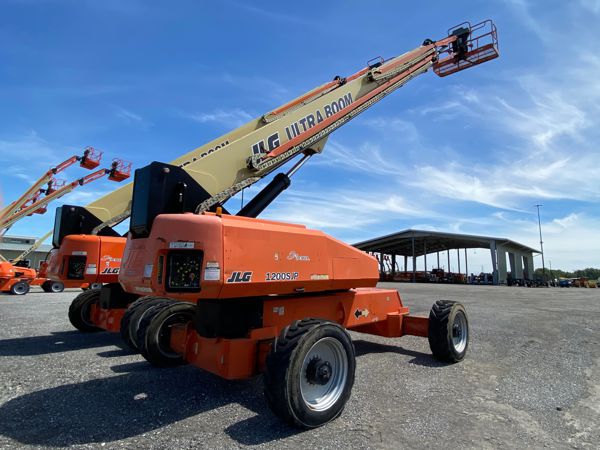
Aerial lifts have become essential equipment for accessing elevated areas safely. These versatile machines come in various forms, including boom lifts, articulated boom lifts, scissor lifts, and telescopic boom lifts, each designed to meet different job requirements.
Over recent years, more construction firms and job sites have embraced aerial lifts over traditional scaffolding and ladders. This shift is largely due to the enhanced mobility and accessibility aerial lifts offer, especially in challenging environments.
Leading aerial lift manufacturers today include JLG and Terex's Genie brands. These companies have consistently innovated to improve safety and efficiency in the field.
Like most machinery, aerial lifts present specific hazards that operators must be aware of. Common incidents include falls from elevated platforms, items falling onto people below, tip-overs, ejections from the platform, structural failures, electrocutions from nearby power lines, and entanglements.
The Occupational Safety and Health Administration (OSHA) provides detailed guidelines for the safe operation of aerial lifts on job sites.
Pre-Lift Inspection
Conducting a thorough inspection before each shift is critical to ensuring the safety and functionality of your aerial lift. Always follow the manufacturer's safety and maintenance protocols. Below is a checklist to guide your inspection:
-
Vehicle Components:
- Check fluid levels (oil, hydraulic, fuel, and coolant)
- Look for fluid leaks
- Inspect wheels and tires
- Verify the battery and charger are functioning correctly
- Confirm lower-level controls are operational
- Test horn, gauges, lights, and backup alarms
- Ensure steering and brakes are responsive
-
Lift Components:
- Examine operating and emergency controls
- Make sure personal protective equipment (PPE) is available
- Inspect hydraulic, air, pneumatic, fuel, and electrical systems
- Check fiberglass and other insulating components
- Verify that all placards, warnings, operational, instructional, and control markings are intact and readable
- Inspect mechanical fasteners and locking pins
- Review cable and wiring harnesses for damage
- Assess outriggers, stabilizers, and other structures
- Ensure there are no loose or missing parts
- Confirm guardrail systems are secure
-
Work Zone Inspections:
- Identify drop-offs, holes, or unstable surfaces like loose dirt
- Ensure adequate ceiling heights
- Look for slopes, ditches, or bumps
- Clear debris and floor obstructions
- Maintain a safe distance from overhead electric power lines and communication cables
- Be cautious during high winds and other severe weather conditions, such as ice
- Alert others in close proximity to the work area
Safety Practices When Operating An Aerial Lift
Fall Protection
- Always ensure access gates and openings are closed.
- Keep both feet firmly planted on the floor of the platform.
- Avoid climbing on or leaning over guardrails.
- Refrain from using planks, ladders, or other devices as a working position.
- Use a body harness or a restraining belt with a lanyard attached to the boom or bucket.
- Never belt-off to adjacent structures or poles while in the bucket. If the platform moves, it could eject you.
Operation/Traveling/Loading
- Do not exceed the load-capacity limits. Consider the combined weight of people, tools, and materials.
- Never use the aerial lift as a crane. It was not designed for this purpose and doing so can lead to faster wear and tear and potential injury.
- Avoid carrying objects larger than the platform.
- Refrain from driving with the lift platform raised unless the manufacturer’s instructions explicitly allow this.
- Do not operate lower-level controls unless permission is obtained from the worker(s) in the lift (except in emergencies).
- Stay within vertical and horizontal reach limits.
- Avoid operating an aerial lift in high winds above those recommended by the manufacturer.
- Do not override hydraulic, mechanical, or electrical safety devices.
Overhead Protection
- Be mindful of overhead clearance and overhead objects, including ceilings.
- Position aerial lifts away from overhead hazards whenever possible.
- Treat all overhead power lines and communication cables as energized, and maintain a minimum distance of 10 feet.
- Ensure that the power utility or power line workers de-energize power lines in the vicinity of the work.
Aerial Lift Stability
- Place outriggers on pads or on a level, solid surface.
- Set brakes when outriggers are used.
- Use wheel chocks on sloped surfaces when it is safe to do so.
- Set up work zone warnings, such as cones and signs, when necessary to alert others.
Group Discussion Topics
- Is the aerial lift in good condition (for example, tires, hydraulic lines, signage, etc.)? Perform a visual inspection daily.
- Are there any potential risks at elevated levels nearby (for instance, power lines, gas pipes, etc.)?
- How safe is the workplace floor surface to operate an aerial lift?
- How many persons will be on the platform? Does the combined weight of the persons and their gear exceed weight limits?
- What could cause the scissor lift to tip over?
Find Similar Articles By Topic
#construction #material handling #toolbox talks #aerial lifts #Terex #JLG
As the construction industry continues to evolve, the importance of proper aerial lift usage cannot be overstated. Training employees thoroughly and adhering to safety guidelines can significantly reduce accidents and enhance productivity on the job site. Regular maintenance checks and awareness of environmental factors further contribute to safer operations.
For those looking to deepen their understanding of aerial lift operations, exploring additional resources such as training videos, webinars, and forums can be beneficial. Staying informed about advancements in technology and safety practices ensures that you remain ahead of potential hazards and can implement best practices effectively.
Remember, safety is a shared responsibility. Encourage open communication among team members regarding any concerns or observations related to aerial lift operations. Together, we can foster a culture of safety that benefits everyone involved.
Oxygen Booster,Oxygen Booster Compressors,Oxygen Boost Canister,Oxygen Booster Machine
Jiangsu Minnuo Machinery Manufacturing Co., Ltd. , https://www.minnuoindustry.com